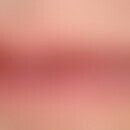Synonym(e)
Acroosteopathia ulcero-mutilans familiaris; Akrodystrophie primäre neuropathische; Akrodystrophie primär neuropathische; Akroosteolyse familiäre; Familiäre Akroosteolyse; Hereditäre sensible Neuropathie Typ I; HSN Typ I; Kongenitale sensorische Neuropathie; Morbus Thevenard; Morbus Thévenard; Nélaton Syndrom; Neuropathie kongenitale sensorische; OMIM 162400; OMIM 613640; Primäre neuropathische Akrodystrophie; Thevenard-Syndrom; Thévenard-Syndrom
Definition
Degeneration der peripheren Nerven der hinteren Rückenmarkswurzeln ungeklärter Ursache mit konsekutiver Polyneuropathie und Auftreten schmerzloser, tiefer Ulzerationen an Füßen und Händen.
Auch interessant
Ätiopathogenese
Autosomal-dominanter Erbgang, geringe Penetranz, variable Expressivität. Diskutiert werden u.a. Mutationen am 9q22 Genlokus (SPTLC1-Gen). Andere Familien sind mit Mutationen des Genlokus 14q24.3 (SPTLC2-Gen) assoziiert worden. Beide Mutaionen führen zu unterschiedlichen Defektvarianten des Enzymes Serin-Palmitoyltransferase (SPT).
Klinik
Symmetrisch angeordnete, strumpfförmige Empfindungsstörung für Schmerz, Temperatur und Berührung, gelegentlich Pyramidenzeichen (Babinski positiv). Häufig abgeschwächte Sehnenreflexe. Schmerzlose Ulzera, zunächst meist ein-, später beidseitig, v.a. an druckbelasteten Arealen. Akrozyanose und Schwellung von Fingern und Zehen. Akroosteolysen, Osteoporose, evtl. Muskelatrophien, Senkfüße, Spreizfüße.
Differentialdiagnose
Syringomyelie, Acropathia ulcero-mutilans non-familiaris, Tabes dorsalis, Lepra, Polyneuropathien (Alkohol, Diabetes mellitus, Vitamin B1-Mangel); HSN Typ II;
Therapie
Symptomatisch: Vermeidung örtlicher mechanischer Reize und Druckstellen (z.B. orthopädische Schuhe), Anleitung zur täglichen genauen Selbstuntersuchung auf kleinste Verletzungen, Behandlung der Ulzera mit antiinfektiösen und wundheilungsfördernden Substanzen, s.u. Wundbehandlung. Zusammenarbeit mit Neurologen und Orthopäden.
Verlauf/Prognose
Langsam progredienter Verlauf, meist relativ gutartig (keine ausgeprägten Verstümmelungen).
LiteraturFür Zugriff auf PubMed Studien mit nur einem Klick empfehlen wir  Kopernio
Kopernio
 Kopernio
Kopernio- Auer-Grumbach M et al. (2003) Autosomal dominant inherited neuropathies with prominent sensory loss and mutilations: a review. Arch Neurol 60: 329-334
- Auer-Grumbach M et al. (2000) Ulcero-mutilating neuropathy in an Austrian kinship without linkage to hereditary motor and sensory neuropathy IIB and hereditary sensory neuropathy I loci. Neurology 54: 45-52
- Bejaoui K et al. (2002) Hereditary sensory neuropathy type 1 mutations confer dominant negative effects on serine palmitoyltransferase, critical for sphingolipid synthesis. J Clin Invest 110: 1301-1308
- Bejaoui K et al. (1999) Confirmation of linkage of type 1 hereditary sensory neuropathy to human chromosome 9q22. Neurology 52: 510-515
- Bockers M et al. (1989) Persistent skin ulcers, mutilations, and acro-osteolysis in hereditary sensory and autonomic neuropathy with phospholipid excretion. Report of a family. J Am Acad Dermatol 21: 736-739
- Gable K et al. (2002) Mutations in the yeast LCB1 and LCB2 genes, including those corresponding to the hereditary sensory neuropathy type I mutations, dominantly inactivate serine palmitoyltransferase. J Biol Chem 277: 10194-10200
- Kind R (1976) Zum Syndrom der Akroosteopathia ulcero-mutilans Thévenard. Z Hautkr 51: 927–932
- Nélaton A (1852) Affection singulière des os du pied. Gazette des hôpitaux, (Paris) 4: 13
- Thévenard A (1942) L'acropathie ulcéro-mutilante familiale. Rev Neurol (Paris) 74: 193–212
Verweisende Artikel (12)
Acroosteopathia ulcero-mutilans familiaris; Acropathia ulcero-mutilans non-familiaris; Akrodystrophie, primäre neuropathische; Akrodystrophie, primär neuropathische; Akroosteolyse; Akroosteolyse, familiäre; Alkohol Hautveränderungen; Malum perforans; Neuropathie, kongenitale sensorische; SPTLC1-Gen; ... Alle anzeigenWeiterführende Artikel (10)
Acropathia ulcero-mutilans non-familiaris; Akrozyanose; Lepra (Übersicht); Malum perforans; SPTLC1-Gen; SPTLC2-Gen; Syringomyelie, Hautveränderungen; Tabes dorsalis; Ulkus der Haut (Übersicht); Wundbehandlung;Disclaimer
Bitte fragen Sie Ihren betreuenden Arzt, um eine endgültige und belastbare Diagnose zu erhalten. Diese Webseite kann Ihnen nur einen Anhaltspunkt liefern.





